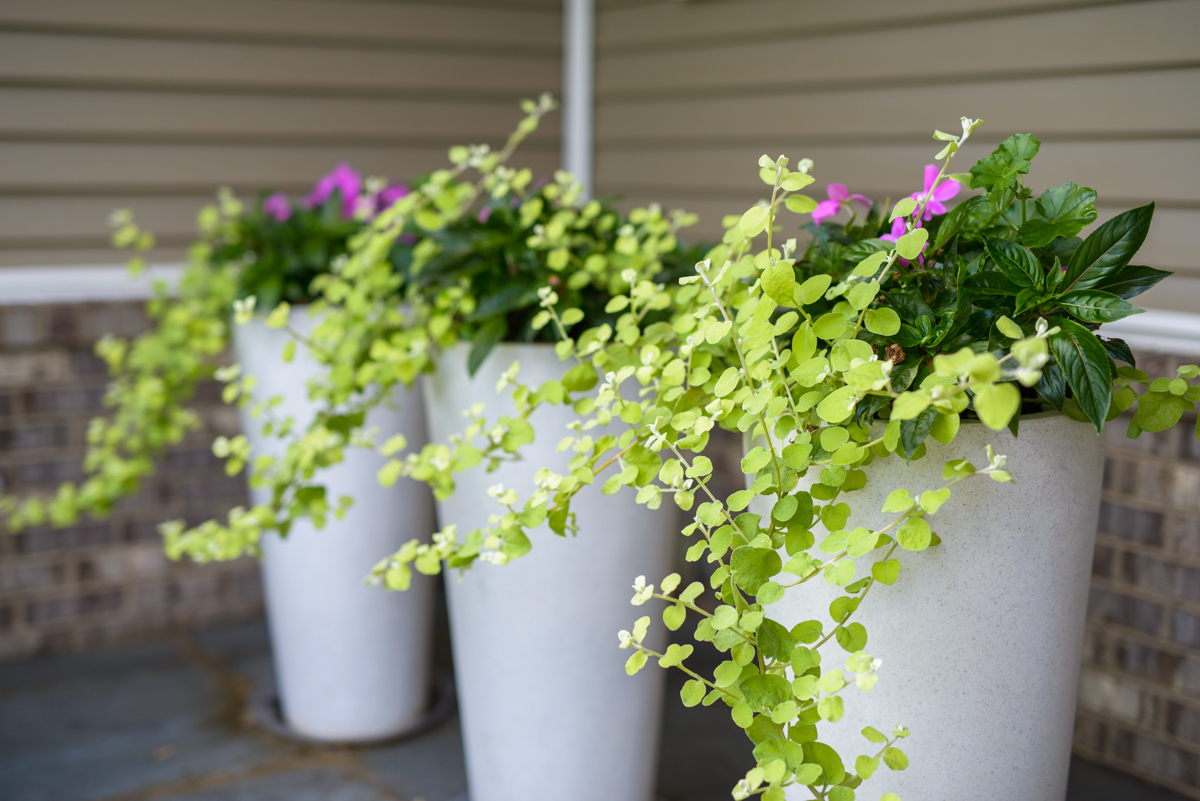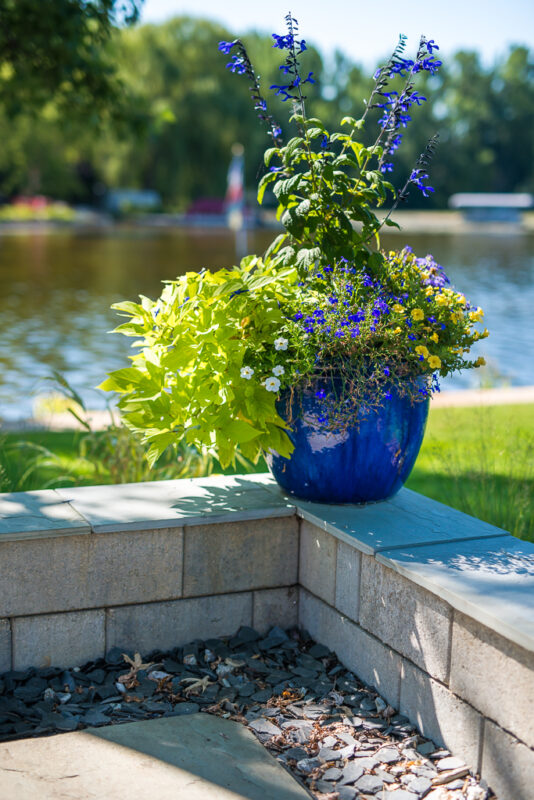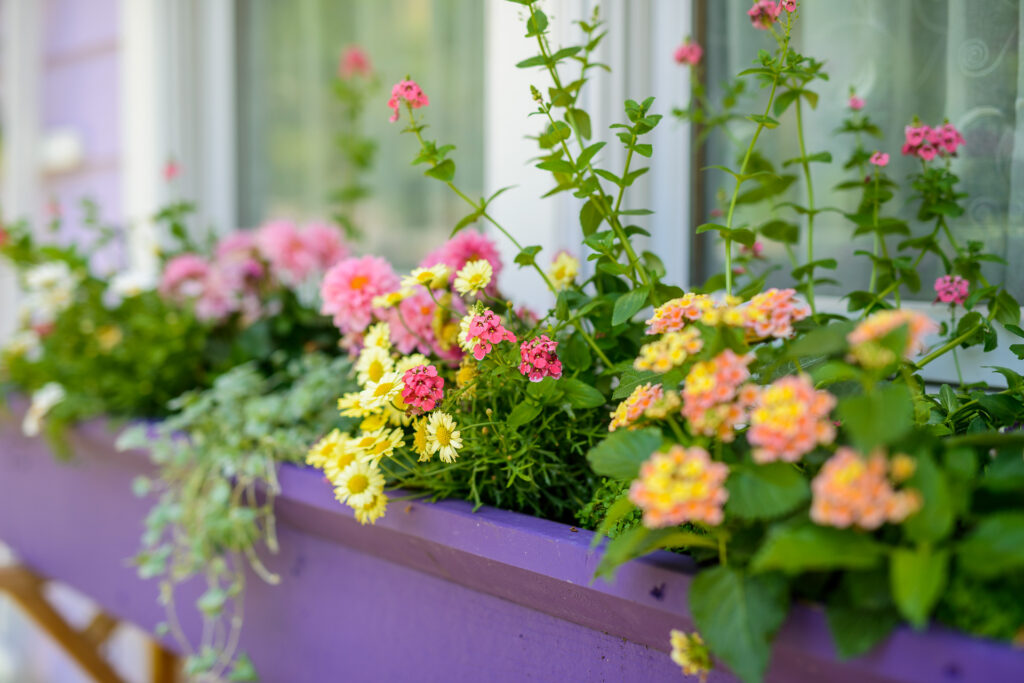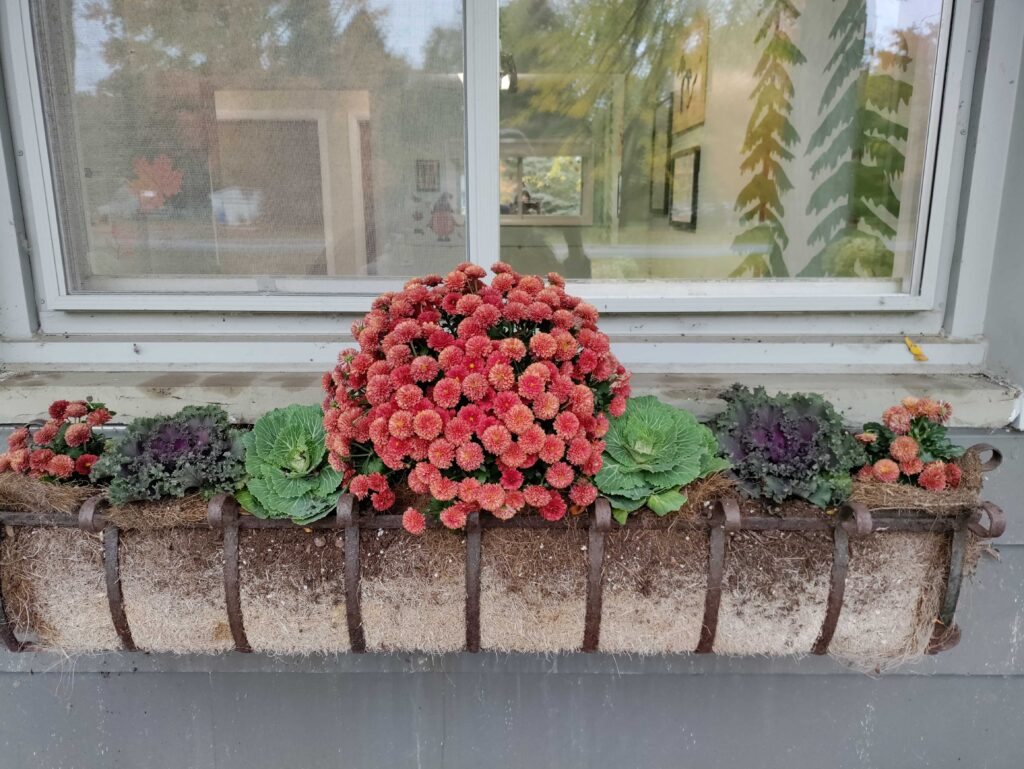Fall Annual Flower Displays
Posted on August 19, 2023

Summer is still here, but we are planning for fall. Planting some fall colors is a great way to signal the end of summer and celebrate the fall holidays.
The most popular is our Fall Annual Flower Displays. We have several plants to choose from that are ideal for planting in the fall season. Here are the most popular options:
- Mums (Chrysanthemums): Mums are iconic fall flowers known for their vibrant colors and longevity. They come in various shades, adding a burst of color to your autumn garden. These are annuals and will die after a frost.
- Pansies: Pansies are hardy flowers that can withstand cooler temperatures. They offer a wide range of colors and can provide cheerful blooms well into the fall season.
- Asters: Asters are daisy-like flowers that bloom in shades of pink, purple, and blue. They are perfect for adding a pop of color to your fall landscape. Some asters are perennials, but they do not always fare well when planted late in the fall.
- Sedum: Sedum, also known as stonecrop, is a versatile plant that comes in various varieties. Their succulent foliage and late-season blooms make them an excellent choice for fall planting.
- Ornamental Cabbage and Kale: These plants are loved for their unique and striking foliage. Their colorful leaves add texture and interest to fall displays. These are annuals, but tend to look good throughout the fall season. They will die after a hard frost.
- Russian Sage: Russian sage is a perennial plant that produces lovely lavender-blue spikes of flowers. It can add a touch of elegance and vertical interest to your fall garden.
- Switchgrass: This ornamental grass turns a beautiful shade of gold in the fall, adding movement and texture to your landscape.
- Purple Fountain Grass: The plant earns its name from the dark, purple-red color of its arching leaves. It also has fuzzy-looking purple flowerheads in autumn.
- Japanese Anemone: These delicate, elegant flowers bloom in shades of white and pink during the fall, making them a charming addition to any garden.
- Helenium: Helenium, also known as sneezeweed, boasts vibrant, daisy-like flowers in shades of red, orange, and yellow. They can provide a burst of color late into the season.
- Heuchera (Coral Bells): Heuchera offers a range of foliage colors, from deep burgundy to lime green. Their foliage adds visual interest even after the blooms have faded.
The Lotus team can help you pick out the right plants for your space. We can also help you refurbish or redesign your current garden beds to make room for future plantings. Using containers can add some flexibility instead of using your current garden beds, especially if your garden has a lot of perennials that you would prefer to keep in place.

Planting In Containers Vs Beds
One question that comes up when discussing fall plants is how and where to plant them. In some cases, containers are a great way to display your fall colors. If you want to install a new bed, fall planting is a great opportunity to have our team install one for you. If you have an existing bed suitable for annuals, we will help you come up with a design.
Here is a little more information on the differences between using containers vs. garden beds:
Containers:
- Flexibility: Containers offer a high degree of flexibility. You can place them on patios, decks, porches, or any other location. This is especially beneficial if you have limited outdoor space.
- Design Versatility: Containers come in various shapes, sizes, and materials, allowing you to get creative with your design. You can choose containers that match your aesthetic preferences and complement your existing outdoor decor.
- Portability: Containers can be moved easily, which is advantageous if you want to rearrange your outdoor setup or protect plants from frost. You can bring containers indoors or to a sheltered area during extreme weather conditions.
- Plant Variety: Different plants have varying temperature and light requirements. Containers allow you to group plants with similar needs together, ensuring optimal growing conditions for each species.
- Maintenance: Container plants may require more frequent watering and fertilizing compared to plants in the ground. However, you have greater control over soil quality and drainage, which can contribute to healthier growth.
Garden Beds:
- Larger Planting Space: Garden beds provide more space for plants to spread their roots and grow. This can be particularly beneficial for larger plants or those with extensive root systems.
- Integration with Existing Landscape: Garden beds seamlessly integrate with the rest of your landscape, creating a cohesive and natural look. They allow for a more seamless transition between different areas of your yard.
- Soil Health and Nutrients: Garden beds often have access to deeper, richer soil that can support robust plant growth. Amending the soil with compost and other organic matter can further enhance its fertility.
- Less Frequent Maintenance: Once established, plants in garden beds generally require less frequent watering than container plants. Garden beds can also benefit from natural rainfall and a more consistent soil temperature.
- Long-Term Planting: Perennials and shrubs planted in garden beds have the potential to establish themselves and come back year after year, providing a sustainable and enduring landscape.
When deciding between containers and garden beds for your fall planting, consider factors such as available space, design preferences, maintenance commitment, and the specific plants you wish to grow. You can also combine both approaches to create a dynamic and visually appealing fall display that incorporates the best of both worlds.

Celebrate Fall Holidays In Style
Celebrate the fall holiday with some fun in your outdoor space. Adding unique elements to your fall planting can create a captivating and memorable landscape.
Here are some creative ideas to enhance your fall planting with distinctive features:
- Ornamental Grasses: Ornamental grasses, such as Miscanthus, Pennisetum, and Panicum, can add movement, texture, and a sense of natural beauty to your fall display. Their feathery plumes and graceful growth habits complement the changing colors of fall.
- Hay Bales: Stacking hay bales can evoke a charming rustic feel. They can serve as both decorative elements and functional seating areas for outdoor gatherings.
- Scarecrows: Scarecrows bring a whimsical touch to your fall garden. You can customize them with different outfits, poses, and facial expressions to add character and playfulness.
- Pumpkins and Gourds: Pumpkins and gourds are quintessential fall decorations. Arrange them in various sizes and colors around your plants or use them to line pathways and borders.
- Cornstalks: Cornstalks can add vertical interest and a touch of nostalgia to your fall planting. They work well when positioned against fences, trellises, or as a backdrop to other plants.
- Fall Wreaths and Garlands: Hang fall-themed wreaths on doors, fences, or garden structures. Garlands made from colorful leaves, vines, or other natural materials can also be draped along fences or archways.
- Birch Logs or Branches: Incorporating birch logs or branches can introduce an elegant and rustic element. They can be used as plant supports, decorative features, or even as natural sculptures.
- Lanterns or Candle Holders: Illuminate your fall planting with lanterns, candle holders, or string lights. These create a cozy and inviting ambiance, especially as the days grow shorter.
- Decorative Planters: Unique planters, such as vintage crates, old wheelbarrows, or repurposed containers, can add character and charm to your fall planting arrangement.
- Fairy Garden or Miniature Scene: Create a magical atmosphere by designing a small fairy garden or miniature scene amidst your plants. Add tiny figurines, miniature furniture, and small accessories to bring the scene to life.
- Fall-Themed Signage: Incorporate signs with fall quotes, greetings, or directional arrows. These can be made from wood, chalkboards, or other materials and can be positioned throughout your garden.
- Harvest Decor: Showcase the bounty of the season with elements like baskets of apples, pears, or other harvest produce strategically placed among your plants.
These additions can create a delightful and enchanting fall atmosphere that captures the spirit of the season. Make your space memorable by adding some of these elements to your decor.

When to plant and how to handle a deep freeze?
Timing is crucial when it comes to fall planting and adding seasonal decorations. It’s important to work with the natural cycles of the seasons to ensure the health and longevity of your plants. Here is a breakdown of when to install and when to remove fall plantings and decorations:
How early can you plant?
For most fall plants, it’s best to plant them well before the first hard frost. Aim for at least 6-8 weeks before your region’s average frost date. This allows the plants to establish strong root systems before winter. Perennials and shrubs can be planted in early fall to give them time to establish roots. Cooler temperatures and increased rainfall in early fall create favorable conditions for root growth. Fall is the perfect time to plant spring-blooming bulbs like tulips, daffodils, and crocuses. Plant them in September or early October before the ground freezes. If you’re planting annual flowers for fall color, do so by early to mid-fall, depending on your region. These plants will bloom until the first frost.
What to do after the first hard freeze?
As the fall season comes to an end and the first hard freeze is imminent, it’s time to start thinking about removing certain plants and decorations. After the first frost, annual flowers will start to decline. Once they are no longer blooming and have been affected by frost, it’s time to remove them from your garden beds and containers. Perennials and shrubs should not be removed; instead, let their foliage die back naturally. You can tidy up the garden by cutting back dead foliage in late fall or early spring, depending on the plant. Decorations like pumpkins, gourds, and hay bales will start to deteriorate after exposure to frost and freeze. Remove them once they show signs of decay or after the first hard freeze to maintain the overall appearance of your landscape.
